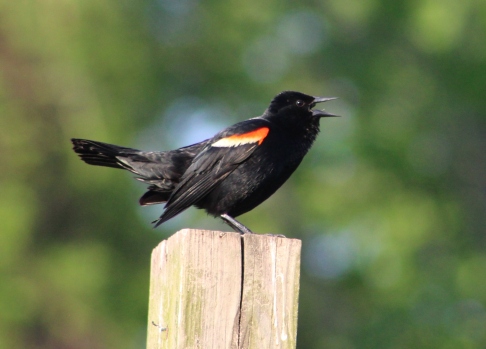I was unsure about what seabird I wanted to write about this week. Earlier in the day I was hanging out with my mom and brought up my predicament. She reads all my posts, so I wanted to know what she wanted to read about.
“Oh, you should write about the seagull!”, she suggested. I liked that idea. I asked her what kind.
“You know, the seagull.”, she replied. Her response was an extremely common answer that you would get from a majority of people. But it’s actually not correct (sorry Mom, no one else realizes that either! 🙂 )
A lot of people are surprised to find this out, but there is no such thing as a seagull. You read that right: it doesn’t exist. But about 98% percent of people I talk to have no clue that there are no seagulls, only gulls. The term “Seagull” is the informal layperson’s word that is used all around the world to refer to members of the Laridae family, or gulls. There are 27 species of gull in North America. The word Laridae is Greek and means “ravenous sea bird”. This week’s featured bird is the Laughing Gull, which is a summertime visitor here at the Jersey Shore.
Laughing Gull (Leucophaeus atricilla)
Description:
Laughing Gulls are medium-sized gulls that have long wing/legs and stout bills. They are considered a “three-year gull”, meaning it takes 3 years for Laughing Gulls to reach adult plumage. In summer breeding plumage adults have black “hood” plumage on their heads/black wing tips, white underparts/eye-arcs, and a drooped red bill. In non-breeding winter plumage their black heads change to a blurry gray mask on white. Throughout the year adults have gray wings and black feet. Immature birds are browner.
Range:
Resident to long-distant migrant. Year-round resident south of Virginia through the Gulf Coast and west coast of Mexico. Migrating populations spend the winter in Central and South America and spend the summer in the Northeastern United States.
Habitat:
Atlantic and Gulf Coast saltwater beaches and marshes. Can also be found at parks, landfills, or parking lots where food is readily available.
Food:
Laughing Gulls have a highly-varied diet. They eat insects, fish, invertebrates, squid, and crabs while they gather while walking the beach, swimming, or stealing from other birds. They are scavenger, and will eat human-made objects such as garbage and refuse from boats. Laughing Gull are notorious for eating anything toss by or offered from beachgoers. (Or sometimes food not offered by beachgoers. I certainly have had Laughing Gulls steal food from me while living at the shore!)
Breeding/Nesting:
Laughing Gulls breed in large colones, often mixed with other gulls, American Oystercatchers, and Black Skimmers. Colonies can be up to 25,000 pairs and thousands of nests. Both sexes help construct the nest out of grasses/seaweed on the ground or under shrubs in some regions. They have 1 brood with a clutch size of 2-4 eggs which are incubated by both sexes for about 20 days. The young leave the nest within a few days of hatching and are feed by the parents. They start with half-digested food and transition to solid food as they grow. Their first flights are at about 5 weeks old.

Sounds:
They are named “Laughing” Gulls because their loud nasal descending calls sound like laughing.

Fun Facts:
- Sometimes Laughing Gulls will eat the young or eggs of other birds. According to the Cornell Lab of Ornitholgy, John Jame Audubon saw Laughing Gulls eating Brown Noddy and Sooty Tern eggs/chicks. They also eat Royal Tern eggs sometimes.
- They are known to steal food from birds that are much larger than them, such as Ospreys and Pelicans.
- Laughing Gulls are monogamous and stay with the same mate for several breeding seasons.




My mentor, Starre Saphir, used to say “Seagulls are actually Baygulls because that is where you find them”. A play on the word bagel.
LikeLike
I like that 😀
LikeLike